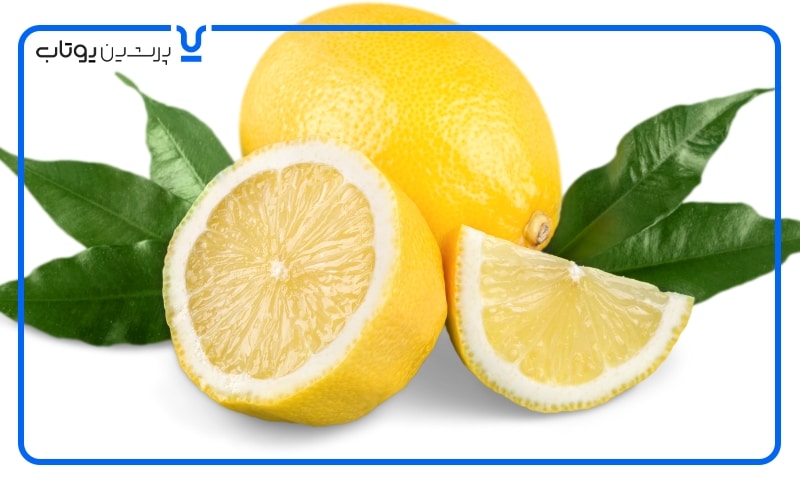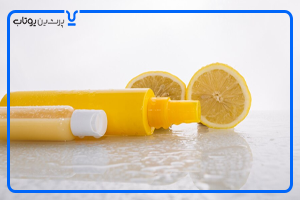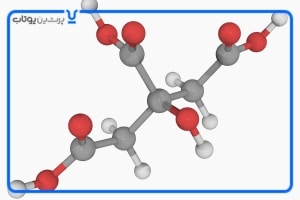اسید سیتریک به عنوان تنظیم کننده اسیدیته
از اسید سیتریک به عنوان تنظیم کننده اسیدیته مطمئن می توان در مواد غذایی استفاده کرد.این ماده طعمی تند یا ترش مطبوعی به غذا می دهد، هر نوع شیرینی را متعادل می کند و به حفظ سطح اسید ثابت در غذا کمک می کند.گاهی اوقات برای جلوگیری از اکسیداسیون مانند قهوه ای شدن یا خراب شدن میوه ها و گوشت ها استفاده می شود.به طور طبیعی به عنوان اسید لیمو و سایر مرکبات وجود دارد.به راحتی می توانید اسید سیتریک را به عنوان کریستال سفید یا گرانول از سوپرمارکت ها و داروخانه ها خریداری کنید.این ماده به عنوان جایگزین آب لیمو، ماده طعم دهنده یا کمک تمیز کننده طبیعی به فروش می رسد.اسید سیتریک دارای عملکردهایی نظیر تنظیم کننده اسیدیته، عامل اسیدی، تثبیت کننده رنگ، هم افزایی آنتی اکسیدانی است. این ماده به خوبی در آب حل می شود و از این رو در صنایع غذایی استفاده می شود. اسید سیتریک به طور گسترده ای برای اسیدی سازی در تولید الکل (شراب) و نوشابه و شیرینی سازی استفاده می شود.
اسید سیتریک به عنوان تنظیم کننده اسیدیته
اسید سیتریک به عنوان تنظیم کننده، یک ماده بی رنگ است و ماهیت بلوری دارد.اسید سیتریک (E 330) فعالیت بسیاری از آنتی اکسیدان ها را افزایش می دهد، اما به خودی خود آنتی اکسیدان نیست. این ماده عمدتا به عنوان تنظیم کننده اسیدیته و همچنین به عنوان ترکیب معطر استفاده می شود. علاوه بر این باعث افزایش قوام ژل در مارمالاد و کاهش قهوه ای شدن آنزیمی در میوه ها و محصولات میوه ای می شود.در حالی که تنظیم کننده های مختلف اسیدیته که در غذاهای مختلف مورد استفاده قرار می گیرند وجود دارد، اما کاربرد اصلی همان است: بهبود ایمنی و طعم غذا که از کاربرد های اسید سیتریک است.
تنظیم کننده اسیدیته چیست؟
تنظیم کننده های اسیدیته غذایی بخشی جدایی ناپذیر از صنایع جهانی افزودنی های غذایی را تشکیل می دهند.مجموعه ای از مواد اسیدی هستند که رشد باکتری های مضر را کنترل می کنند و اسیدیته (PH) را برای حفظ ایمنی مواد غذایی و افزایش عطر و طعم تنظیم می کنند. نمونه هایی از تنظیم کننده های اسیدیته شامل اسید سیتریک، سدیم، اسید مالیک و اسید فسفریک است.مقیاس pH میزان اسیدیته یا قلیایی یک ماده معین را اندازه گیری می کند، از 0-14، در حالی که =PH7 خنثی است. مرکبات، شراب و آبجو همه مقیاس کمتر از 7 هستند و بنابراین اسیدی هستند. در حالی که سفیده و جوش شیرین محصولات قلیایی هستند، بنابراین در مقیاس pH بالاتر از 7 قرار می گیرند. تنظیم کننده های اسید برای اولین بار برای دستکاری سطح pH ، برای غذای سالم و خوشمزه معرفی شدند.اسید زدایی وسیله ای برای کنترل رشد باکتری های مضر، حفظ مواد غذایی در نتیجه طعم بهتر و تا زمانی شما را مصرف می کنید، خوردن آن مطمئن تر است.برخی از اسیدیته ها همچنین به عنوان تثبیت کننده عمل می کنند، برخی دیگر به آنتی اکسیدان ها یا امولسیون کننده ها یا به حفظ رنگ کمک می کنند. اما حفظ pH مناسب اولین قدم برای اطمینان از ایمنی مواد غذایی و ماندگاری بیشتر است .تنظیم کننده های اسیدیته برای تغییر و کنترل اسیدیته یا قلیایی بودن در سطح خاصی که برای فرآوری، طعم و ایمنی مواد غذایی مهم است استفاده می شود. عدم کنترل کافی PH می تواند منجر به رشد باکتری های نامطلوب در محصول شود که می تواند یک خطر بالقوه برای سلامتی باشد.

غذاهای اسیدی و اسیدی شدن
اسیدی شدن یکی از ابزارهای حفظ محصولات غذایی است. علاوه بر جلوگیری از رشد باکتری ها، به حفظ کیفیت مطلوب محصول نیز کمک می کند. خیار، کنگر فرنگی، گل کلم، فلفل و ماهی نمونه هایی از غذاهای کم اسید هستند که به طور معمول اسیدی می شوند. اگر اسیدی شدن در PH 6/4 یا پایین به میزان کافی کنترل نشود، کلستریدیوم بوتولینوم، یک میکرو ارگانیسم سازنده سم خطرناک، می تواند در غذاهای خاص رشد کند.
آیا مصرف اسید سیتریک به عنوان تنظیم کننده اسیدیته بی خطر است؟
اسید سیتریک که نه تنها به طور گسترده در پخت و پز و نگهداری مواد غذایی استفاده می شود، بلکه ایمن ترین مورد برای استفاده است. به مقدار کم در مواد غذایی قرار می گیرد، بنابراین می توان آنها را به عنوان بخشی از غذا مصرف کرد.
آیا تنظیم کننده های اسیدیته به عنوان مواد نگهدارنده عمل می کنند؟
تنظیم کننده های اسید فقط برای طعم دادن استفاده نمی شوند بلکه به عنوان مواد نگهدارنده نیز عمل می کنند که باعث ماندگاری بیشترغذا می شوند.
بازار تنظیم کننده های اسیدیته
انتظار می رود بازار تنظیم کننده های اسیدیته طی 5 سال آینده با CAGR 7.2٪ بین سال های 2018-2023 با نرخ قابل توجهی رشد کند. در اقتصادهای توسعه یافته، رشد تقاضا برای غذای آماده بازار تنظیم کننده های اسیدیته را هدایت می کند. علاوه بر این، افزایش آگاهی از ضایعات غذا بر ماندگاری محصولات غذایی و آشامیدنی تأثیر می گذارد، بنابراین تقاضای تنظیم کننده های اسیدیته را افزایش می دهد.اسید سیتریک با بیش از 57 درصد سهم بازار، بازار تنظیم کننده های اسیدیته را رهبری می کند، زیرا بیشتر در نوشیدنی ها، غذاهای فرآوری شده و محصولات شیرینی سازی بیشتر مورد استفاده قرار می گیرد. بازار اسید سیتریک نیز تقاضای زیادی را تجربه می کند، زیرا اکنون در کشورهایی که فسفات را ممنوع کرده اند به طور فزاینده ای به عنوان ماده تمیز کننده استفاده می شود.تولید جهانی اسید سیتریک به طور عمده توسط منطقه آسیا و اقیانوسیه پیشگام می شود. از نظر میزان مصرف، اروپای غربی و آمریکای شمالی از نظر میزان تقاضا پیشتاز هستند و به دنبال آن مصرف داخلی در چین، اروپای شرقی و برزیل، جایی که پیش بینی می شود طی چند سال آینده به دلیل افزایش تقاضا برای مصرف بیشتر محصولات طبیعی افزایش یابد.
فواید سلامتی اسید سیتریک
اسید سیتریک نه تنها از نفوذ باکتری های نامطلوب به مواد غذایی شما جلوگیری می کند، بلکه دارای فواید زیادی برای سلامتی است. اولاً، اسید سیتریک سلامت کلیه را افزایش می دهد. خاصیت قلیایی آن به جلوگیری از تشکیل سنگ کلیه کمک می کند. به عنوان یک آنتی اکسیدان، ضد سرطان است. زیرا اثرات رادیکال های آزاد را خنثی می کند. اسید سیتریک که اغلب در ماسک های صورت یافت می شود، می تواند پوست را احیا کند، بافت را بازسازی کرده و در نتیجه روند پیری را کند می کند. این ماده می تواند التهاب لوزه را کاهش دهد و احساس حالت تهوع را کم کند.




